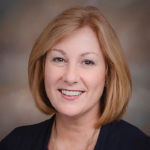(Reuters Health)—The proportion of older Americans taking at least five medications or supplements went up in a recent study.
The increase in people using multiple medications paralleled an increase in the number of older Americans at risk for major drug interactions, researchers found.
“That’s a concern from a public health standpoint, because it’s getting worse,” said Dima Qato, the study’s lead author from the University of Illinois at Chicago.
Qato and her colleagues previously reported that polypharmacy is common among older Americans. More than half were taking prescription and nonprescription medications between 2005 and 2006.
There have been a lot of changes in U.S. regulations and the pharmacy market since that time, however. Some of those changes include new and less expensive generic drugs and the implementation of Medicare Part D, which is the prescription component of the government-run health insurance program for the elderly or disabled.
To evaluate the change in polypharmacy over time, the researchers compared the 2005-2006 results with data collected from 2010–2011.
Participants in the study were between the ages of 62 and 85 and were living at home. The researchers interviewed 2,351 people in 2005–2006 and 2,206 in 2010–2011.
Overall, about 67% were taking five or more medications or supplements in 2010–2011, up from about 53% in 2005–2006.
Use of cholesterol-lowering statins rose from about 34% to about 46%, the researchers report March 21 in JAMA Internal Medicine. The proportion of people taking blood-thinning medications also increased, from about 33% to 43%, and use of omega-3 fish oil pills rose from about 5% to about 19%.
Along with the increase in polypharmacy, the researchers found the risk of major drug interactions nearly doubled, going from about 8% to about 15%.
“I think we have to keep in mind that while it’s important to improve access to medications, we need to make sure they’re used safely,” said Qato.
On one hand, the new results can be seen as positive, said Dr. Michael Steinman, a gerontologist at the University of California, San Francisco.
“We’re treating more people with medications that could potentially help them,” he said. “But when people have four or five chronic conditions, medications quickly balloon to a large number.”
It’s important to ensure clear communication between everyone involved in a patient’s care, including the patient, said Steinman, who wrote an editorial accompanying the new study.
A separate study reported in the same issue of the journal found that nearly 42% of adults did not tell their doctors about the use of complementary or alternative medicine, which includes—among other things—supplements, herbs, homeopathy, special diets and acupuncture.



